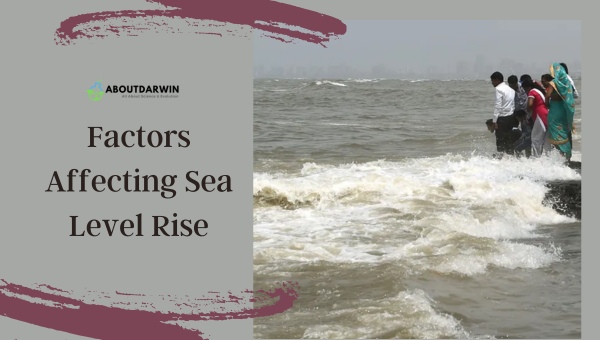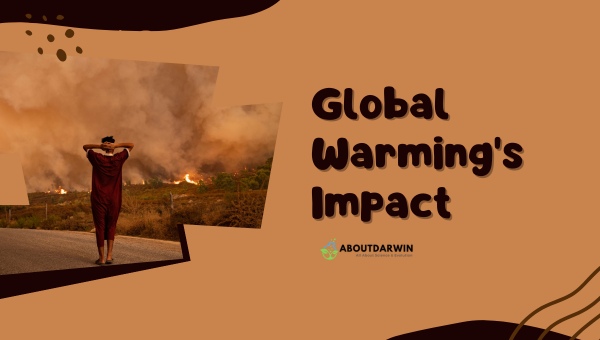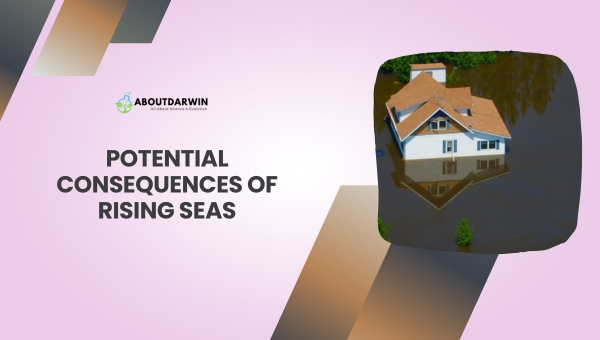Physical Address
304 North Cardinal St.
Dorchester Center, MA 02124
As concerns about climate change grow, one of the most pressing questions we’re facing is, “How much will sea level rise?” Understanding this complex issue is vital to prepare for and mitigate the impacts on coastal communities. Sea level rise isn’t just a simple rise in water; various factors contribute to this phenomenon, making it a critical topic to explore.
The primary drivers of sea level rise are thermal expansion and melting glaciers and ice sheets. Ocean waters expand as the Earth’s temperature rises, and polar ice caps and glaciers worldwide are melting alarmingly. Human activities like groundwater extraction may also play a ROLE in rising sea levels.
While predicting the precise amount of sea level rise is challenging due to the numerous factors, researchers estimate that global sea levels could rise between 1 to 8 feet by 2100. It’s essential to monitor and act upon the impacts of climate change to minimize the potentially devastating consequences of sea level rise.
Contents
When discussing sea level rise, it’s essential to consider the various factors contributing to this phenomenon. In this section, I’ll outline the primary contributors to the current and potential future rise in sea levels.

One of the main factors affecting sea level rise is thermal expansion. As global temperatures increase, so too does the temperature of ocean waters. When the water warms up, it expands, resulting in rising sea levels. According to the Intergovernmental Panel on Climate Change (IPCC), thermal expansion is responsible for approximately half of the observed sea level rise in the 20th century.
Another significant contributor is glacier and ice sheet melt. As global temperatures rise, glaciers and ice sheets in regions like Greenland and Antarctica begin to melt faster. This meltwater eventually flows into the oceans, leading to an increase in sea level. Research estimates that ice melts from Greenland alone contributed to a 0.74 mm/year increase in global sea level between 1991 and 2015.
| Source of Melt | Sea Level Rise Contribution (mm/year) |
|---|---|
| Greenland | 0.74 |
Furthermore, land ice melting from mountain glaciers also contributes to rising sea levels. Across the world, there are thousands of glaciers, many of which are receding due to rising temperatures. This melting ice consequently flows into the oceans, raising sea levels.
Another factor worth mentioning is land water storage changes, which involve water movement among various reservoirs on Earth. Human activities like groundwater extraction and reservoir storage can influence the water cycle and subsequently impact the sea level.
Some important factors that may have direct or indirect influences on sea level rise include:
The primary factors contributing to sea level rise are thermal expansion, glacier and ice sheet melt, land ice melt from mountain glaciers, and changes in land water storage. Moving forward, it’s critical to understand the complex interplay among these factors to better predict and mitigate the impacts of sea level rise on coastal communities and ecosystems.
Read About The Three Types of Rocks That Make Up Our Earth’s Crust
When it comes to sea level rise, global warming plays a significant role. Melting ice from polar regions and the expansion of seawater due to warming temperatures are two significant factors contributing to this phenomenon. In this section, I’ll delve into how these aspects trigger sea level rise.

Rising temperatures caused by the emission of greenhouse gases like carbon dioxide can lead to the melting of polar ice. As ice sheets and glaciers melt, the water flows into the ocean, raising the overall sea level. To illustrate the potential impact of ice melting, let’s consider some numbers:
| Region | Sea Level Rise Potential (meters) |
|---|---|
| Greenland | 7.42 |
| West Antarctica | 3.3 |
| East Antarctica | 19.7 |
As evident from the table, there’s a significant potential for sea level rise from these melting ice sheets. Moreover, the irreversible melting of East Antarctica’s ice alone could result in a devastating 19.7 meters increase in sea level.
Another aspect to consider is the thermal expansion of seawater. Seawater expands to occupy more space as ocean temperatures rise, resulting in a higher sea level. This process is hard to reverse and can have long-lasting effects on the planet.
To visualize how rising sea levels can impact communities worldwide, here’s a list of some consequences:
As we continue to study the relationship between global warming and sea level rise, one thing remains clear: mitigating the effects of climate change is crucial to minimize future consequences. Consistent monitoring and awareness of these issues will better prepare us for any future challenges associated with rising sea levels.
There’s no denying that sea level rise presents an unprecedented challenge for coastal communities around the globe. The potential consequences are vast and varied, impacting our shorelines, economy, infrastructure, and ecosystems. In this section, I’ll discuss some of the most notable consequences we must consider.

First and foremost is the increased vulnerability to flooding. With sea levels rising, even small increases can turn what would have otherwise been a manageable storm surge into a catastrophic flood. This puts lives in danger and leads to significant property damage and costly recovery efforts.
High-density areas are particularly at risk, given their large populations and extensive infrastructure. The table below highlights the predicted population exposure to coastal flooding by 2050:
| Region | Population Exposed (millions) |
|---|---|
| Asia | 126 |
| Europe | 22 |
| North America | 5 |
Another major concern is the loss of coastal land many call home. As the ocean encroaches, some might be forced to abandon entire areas or even whole communities. This could lead to:
Changes to ecosystems are another critical issue that we must address. Sea level rise can greatly alter the delicate balance in coastal ecosystems, as saltwater infiltrates previously freshwater habitats. This impacts local flora and fauna and industries like fishing, which depend on healthy habitats to support fish populations.
A little-discussed but potentially devastating consequence of rising seas is the compromised integrity of infrastructure. Water treatment plants, power stations, and other critical facilities situated close to the coast might be at risk. A failure or disruption of these essential services could have wide-ranging consequences on both a local and a regional scale.
Lastly, we can’t ignore the economic implications of sea level rise. With increased flooding and property loss, insurance rates and housing costs in coastal regions will likely skyrocket, causing financial strain on affected communities. Tourism, a major economic driver in many coastal towns, may also suffer as beaches disappear and attractions succumb to the encroaching waves.
While it’s impossible to predict the exact trajectory of sea level rise, it’s clear that its consequences are severe and far-reaching. We must build resilience in our coastal communities and work together to mitigate the impact of this global challenge.
Check, Top 10 Fascinating Facts About Uranus
It’s crucial to accurately measure and predict the changes when attempting to understand the potential impact of sea level rise. One way I measure sea level changes is by using satellite altimetry, which allows me to track variations in sea level over time. While this method is quite precise, it’s still essential to be aware of factors like atmospheric pressure and ocean temperature, as they can impact the accuracy of the measurements.
Another method I employ is the use of tide gauges. These devices work by measuring sea level in relation to a fixed point on land. It’s important to note that while tide gauges provide valuable information, they can be influenced by factors such as changes in land elevation or local gravitational effects, particularly near glacier systems. I’ve compiled some data related to sea level changes in the table below:
| Year | Mean Global Sea Level (mm) | Rate of Change (mm/yr) |
|---|---|---|
| 1993 | 34.6 | 3.2 |
| 2005 | 79.5 | 3.5 |
| 2010 | 110.3 | 3.8 |
| 2015 | 139.2 | 3.9 |
| 2019 | 153.4 | 3.4 |
Several factors contribute to sea level rise:
Predicting future sea level changes can be challenging, but I use climate models to help estimate the potential effects. These models consider atmospheric temperature, ice melt rates, and other factors to project possible sea-level changes. However, there’s always uncertainty involved in these predictions, given the complex nature of our planet’s climate system.
Some recent estimates predict the following levels of sea level rise by 2100:
It’s essential to remember that these predictions can vary based on different factors and should be considered a range rather than an exact number.
Measuring sea level changes is a complex process involving various techniques and tools. Predictions of future changes can help us better prepare for the impacts of sea level rise, but they’ll always hold some degree of uncertainty. As a responsible expert, I strive to use the most accurate and up-to-date methods and data to understand this vital environmental issue comprehensively.
Addressing sea level rise is crucial, and there are a variety of adaptation and mitigation strategies to consider. I’ll delve into several key approaches as potential solutions.
One possible strategy is coastal protection. Communities can better manage flood risk by constructing barriers like seawalls and dikes. Additionally, beach nourishment, which entails adding sand to eroding shorelines, can help restore lost beach areas. Some other coastal protection options include:
Another important strategy is managed retreat. This approach involves relocating people, homes, and infrastructure away from vulnerable coastal areas. While this can be challenging and costly, it may be the best long-term solution in certain instances. Key elements of the managed retreat include:
Planning and zoning regulations also play a significant role in addressing sea level rise. Communities can reduce potential damage by enacting stricter building codes and design principles. Possible measures include:
Moreover, society can benefit from investing in early warning systems and preparedness. Advanced monitoring technologies and communication networks can inform communities about impending flooding events. Preparing communities for sea level rise includes:
Lastly, addressing the root cause of sea level rise is essential. Mitigating climate change by reducing greenhouse gas emissions is critical in this effort. Some effective tactics encompass:
Various adaptation and mitigation strategies exist to help minimize the impacts of sea level rise. By combining these solutions, communities can proactively prepare for this growing challenge.
Now that I’ve discussed the potential consequences of rising sea levels, it’s time to consider the uncertain future of our planet. Climate change remains a contentious issue, with varying predictions and timeline estimates. Still, the scientific consensus is clear: sea levels will continue to rise, and we must take action to mitigate their impact.
There are a few potential scenarios for the future sea level rise:
| Scenario | Sea Level Rise (centimeters) | Sea Level Rise (inches) |
|---|---|---|
| Low | 30 | 12 |
| Intermediate | 60 | 24 |
| High | 120 | 48 |
Factors contributing to these different scenarios include:
As an expert blogger, I am responsible for sharing accurate information and addressing this issue’s seriousness. That said, while the future remains uncertain, society must work together to find solutions. By being proactive, we can slow down the rate of sea level rise and minimize its impacts, ultimately protecting our planet for future generations.
Let us all remember:
Our planet’s future is in our hands, and it’s up to us to tackle the challenge of sea level rise, one step at a time. By making informed decisions and working collaboratively, we can mitigate the negative consequences of climate change and ensure a more sustainable future for all.